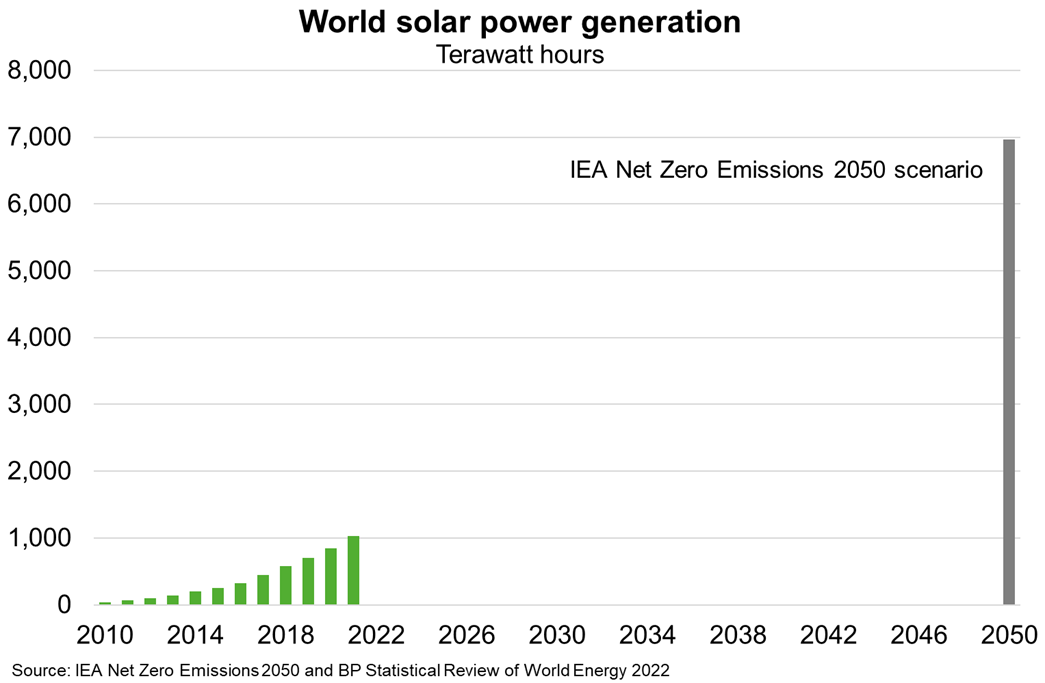Australia—Increasing regional solar uptake offers export opportunities
Over 90% of Australia’s exports last year went to countries that have set net zero emissions pledges. The International Energy Agency (IEA) outlines the most technically feasible, cost-effective and socially acceptable pathway to achieve net zero emissions by 2050, consistent with limiting the long-term increase in average global temperatures to 1.5°C (one of three scenarios modelled by the IEA). In this scenario, renewables drive the net zero transformation—up from 29% of electricity generation in 2020 to 60% in 2030 and nearly 90% in 2050. Solar photovoltaics (PV) is becoming the lowest-cost option for electricity generation in most of the world. However, current solar PV generation capacity is well below the levels envisaged in the IEA’s Net Zero 2050 Scenario (Chart). Achieving this target hinges on scaling up solar rapidly this decade, reaching annual additions of 630 gigawatts of solar PV by 2030, more than three times the record levels set in 2021. This is equivalent to installing the world’s current largest solar park roughly every day. Solar generation investment will increase under all IEA scenarios, to the benefit of Australia’s renewable energy export opportunities.
Asia will likely continue to be the world’s biggest market for renewable energy investment. This reflects that Asia is forecast to be the region with the fastest growth in electricity consumption over the next decade, and is currently the region most reliant on coal for power generation. Greater energy sector investment and the transition to clean energy sources will create new export opportunities for Australia, given its plentiful renewable energy resources, economic capability, regional trade connectivity and strong human capital. Indeed, Australian companies are already designing and installing large-scale concentrating solar generation systems in Asia and pioneering the development of photosynthetic dye solar cells. For instance, Australian companies are helping the Maldives tap solar power and reduce reliance on costly, polluting diesel—helping the country achieve its ambitious net zero emissions by 2030 target.

